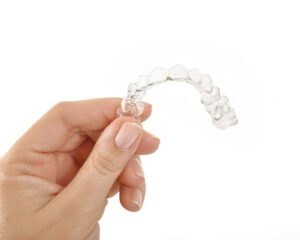
As a parent, knowing when to start orthodontic treatment for your child can be overwhelming. Should you wait until all the baby teeth fall out, or is it better to start early? The answer to this question is not so simple and may vary depending on the individual.
Orthodontic treatment is a popular dental procedure that involves the use of braces, aligners, and other devices to straighten teeth and improve their overall appearance. But, as with any medical procedure, timing is crucial.
Starting too early or too late can affect the effectiveness of the treatment and even lead to unnecessary complications. If you’re considering orthodontic treatment for yourself or your child, it’s essential to know when the right time is to start.
In this article, we’ll explore the different factors that determine when orthodontic treatment should commence and the benefits of early intervention. With this information, you can make an informed decision and ensure the best possible outcome for your orthodontic treatment.
Orthodontic treatment has become increasingly popular in recent years. Although most people imagine braces when they hear the term orthodontics, the field encompasses much more than that. Orthodontists are specialized dentists who focus on the alignment of teeth and jaws.
While orthodontic treatment is typically associated with adolescents and young adults, it is not uncommon for adults to seek treatment as well. In fact, different ages come with different reasons for starting orthodontic treatment.
Orthodontic treatment is more common in adolescents than in any other age group. This is due to the fact that adolescents are still growing, and their bones are easier to adjust.
The majority of adolescents who receive orthodontic treatment do so to correct crooked teeth, overbites, underbites, or other alignment issues. Early treatment can also prevent the need for more extensive and invasive procedures in the future.
Young adults are another age group that frequently seeks orthodontic treatment. At this age, individuals are often pursuing higher education or starting careers, which can place a greater emphasis on physical appearance. Orthodontic treatment can help improve the aesthetics of the smile, giving patients more confidence in their personal and professional lives.
Adults who seek orthodontic treatment typically do so for functional rather than aesthetic reasons. Issues such as crowding, bite problems, or jaw misalignment can impact oral health, causing difficulty with speaking or chewing. Orthodontic treatment can improve oral function, reduce the risk of tooth decay and gum disease, and improve overall oral health.
Orthodontic treatment is not limited to younger age groups. In fact, seniors are increasingly seeking orthodontic treatment, as age-related issues can impact dental and jaw alignment. For example, tooth loss can cause teeth to shift, leading to bite problems or changes in facial structure. Orthodontic treatment can help alleviate these issues and improve oral health and quality of life for seniors.
Early orthodontic treatment, also known as interceptive orthodontic treatment, is crucial for children to prevent future dental and structural problems. By addressing any issues with the developing jaw and teeth at an early age, orthodontists can guide the growth and alignment of the teeth into a healthy position.
Early treatment can prevent more serious problems such as overcrowding, crossbites, and overbites, which can result in difficulty chewing, speech problems, and even temporomandibular joint disorders. It is recommended that children have their first orthodontic evaluation by age 7 to address any potential issues and start treatment if necessary.
Orthodontic treatment plays a crucial role in ensuring healthy teeth and gums. Early orthodontic treatment for children is essential to prevent dental problems in the future. It is essential to understand the different types of orthodontic treatments available for children.

Early orthodontic treatment is crucial for children to ensure proper dental development and prevent future dental issues. There are two phases of early orthodontic treatment that dentists follow to help children develop healthy and aligned teeth.
Phase 1, also known as interceptive orthodontic treatment, is the first step in early orthodontic treatment for children. It usually starts when children are between the ages of 6 and 10 years old.
During this phase, a dentist will evaluate the growth and development of teeth and mouth and address any early signs of dental issues like overcrowded teeth, protruding front teeth, and jaw growth problems.
The primary goal of Phase 1 is to clear space in the mouth to prepare for the arrival of permanent teeth and prevent more severe dental issues from developing. This can be done using a variety of orthodontic appliances, such as braces, retainers, and space maintainers.
Phase 2 of early orthodontic treatment takes place after all permanent teeth have erupted, typically between ages 11 and 13 years old.
During this phase, the dentist will evaluate the alignment of teeth and jaws and check for any underlying dental issues that may impact the final position of teeth.
The primary goal of Phase 2 is to align teeth correctly and create a perfect bite. This phase usually involves braces and other orthodontic appliances that help shift teeth in the right position.
Both Phase 1 and Phase 2 of early orthodontic treatment are necessary to ensure proper dental development and prevent future dental issues. If left untreated, dental issues can impact a child’s oral health and impact their self-confidence. Early orthodontic treatment also helps prevent more severe dental issues that may require invasive and costly treatments down the line.
The best age to start orthodontic treatment varies for each patient and depends on their individual needs. Generally, orthodontic treatment can begin at any age, but the American Association of Orthodontists recommends that children have their first orthodontic evaluation by age 7.
At this age, potential bite and alignment issues can be identified and corrected, which can prevent more severe problems from developing later on. However, older children and adults can also benefit from orthodontic treatment, as issues such as overcrowding or misaligned teeth can be corrected at any age.
Ultimately, the decision of when to start orthodontic treatment should be made in consultation with an experienced orthodontist.
Orthodontic treatment can be started at different ages depending on the individual’s dental needs and overall health. While it is commonly thought that orthodontic treatment is only necessary during adolescence, adults can also benefit from orthodontic treatment.
It is important to consult with an orthodontist to determine the best time to start treatment and to develop a personalized treatment plan. By seeking early orthodontic care from Smilebliss, individuals can improve their dental health, enhance their smile, and potentially avoid more extensive treatment in the future.
Ultimately, the decision to pursue orthodontic treatment should be based on a thorough evaluation of the individual’s unique needs and goals for dental health. Contact us now for more details!